olympic national park guided hikes
Olympic National Park offers immersive guided hikes through diverse ecosystems, from lush rainforests to coastal shores, providing unique experiences with expert guides and insights into its rich biodiversity.
Overview of Olympic National Park
Olympic National Park, located in Washington State, is a UNESCO World Heritage Site renowned for its diverse ecosystems. Spanning over 922,650 acres, it features ancient rainforests, glacier-capped mountains, and 70 miles of pristine coastline. The park’s unique biodiversity includes old-growth forests, alpine meadows, and marine habitats, making it a haven for wildlife and outdoor enthusiasts. Its rugged terrain and natural beauty offer countless opportunities for exploration, making it one of the most ecologically significant parks in the United States.
Why Choose Guided Hikes?
Guided hikes in Olympic National Park provide expert knowledge, ensuring a safer and more enriched experience. Guides offer insights into the park’s flora, fauna, and history, enhancing your connection to the natural surroundings. They navigate challenging trails, handle logistics, and share hidden gems, allowing you to focus on enjoying the journey. This option is ideal for those seeking a deeper understanding of the park’s ecosystems while minimizing environmental impact and maximizing adventure.
Benefits of Guided Tours
Guided tours offer unparalleled access to Olympic National Park’s hidden wonders, with expert guides providing insider knowledge and personalized attention. They ensure a stress-free experience by handling navigation, permits, and safety, allowing you to fully immerse in nature. Tours often include unique insights into the park’s history, geology, and wildlife, creating a richer, more meaningful adventure. This approach maximizes your time and ensures unforgettable experiences tailored to your interests and skill level.
Best Times to Visit Olympic National Park
Olympic National Park is best visited during spring, summer, and fall for optimal hiking conditions, with summer offering the driest weather and longest days for guided hikes.
Seasonal Weather Conditions
Olympic National Park experiences distinct seasonal weather patterns. Spring (March-May) brings mild temperatures and wildflowers, with occasional rain. Summer (June-August) offers warm, dry days ideal for hiking. Fall (September-November) sees cooler temperatures and increased rainfall, while winter (December-February) is colder with snowfall in higher elevations. Understanding these conditions helps hikers prepare appropriately for their guided adventures, ensuring safety and comfort amidst the park’s diverse landscapes.
Wildlife Viewing Opportunities
Olympic National Park offers exceptional wildlife viewing, with guided hikes providing prime opportunities to spot diverse species. Black bears, Roosevelt elk, and mountain goats are common sightings. Coastal areas teem with marine life, including seals and whales. Birdwatchers can enjoy eagles, hawks, and seabirds. Guides often share insights into animal habitats and behaviors, enhancing the experience. Maintaining a safe distance ensures both viewer and animal safety, allowing for unforgettable encounters in this rich ecosystem.
Trail Accessibility Throughout the Year
Olympic National Park’s trails vary in accessibility depending on the season. Summer offers the most open routes, with wildflowers blooming and dry paths. Spring and fall bring mud and rain, requiring sturdy footwear. Winter trails are often snow-covered, with some accessible via snowshoes or skis. Guided hikes ensure safe navigation, as experts know which trails are passable and when. This adaptability allows visitors to explore year-round, with guides handling logistics and route adjustments for optimal experiences.
Popular Guided Hiking Trails
Olympic National Park offers iconic trails like Hurricane Ridge, Hoh Rainforest, and Ruby Beach. Guides lead explorers through diverse landscapes, ensuring immersive experiences tailored to skill levels.
Day Hikes
Olympic National Park offers a variety of guided day hikes, perfect for exploring diverse landscapes. Trails like Hurricane Hill and Hall of Mosses provide stunning views and immersive experiences. Knowledgeable guides share insights into the park’s history, geology, and wildlife, enhancing your adventure. These hikes cater to all skill levels, from easy strolls to more challenging climbs. Guided day hikes ensure safety and navigation, allowing you to focus on the breathtaking scenery and unique ecosystems, such as temperate rainforests and coastal vistas.
Multi-Day Backpacking Trips
Multi-day backpacking trips in Olympic National Park offer immersive experiences across diverse ecosystems. With expert guides, explore challenging trails like the High Divide Loop or Quinault River Trail. These adventures provide deep insights into the park’s natural beauty, including alpine lakes, dense forests, and coastal landscapes. Guides handle logistics, share ecological knowledge, and ensure safety, making these trips unforgettable journeys into the wild.
Tidepooling and Coastal Hikes
Olympic National Park’s coastal hikes and tidepooling adventures offer a unique way to explore the Pacific coastline. Guided tours along beaches like Ruby Beach and Kalaloch reveal vibrant marine life in tidepools, including anemones, starfish, and crabs. Guides provide insights into the coastal ecosystem and ensure safe exploration during low tide. These hikes combine beachcombing with forest trails, offering breathtaking views of the ocean and surrounding cliffs. It’s an unforgettable way to experience the park’s rugged beauty and marine biodiversity.
Winter and Snowshoe Hikes
Explore Olympic National Park’s serene winter landscapes with guided snowshoe hikes, perfect for experiencing the park’s tranquil beauty. Popular spots like Hurricane Ridge offer breathtaking views of snow-capped mountains and forests. Guides provide equipment and expertise, ensuring safety and pointing out hidden gems like animal tracks and winter flora. These hikes are ideal for those seeking a peaceful, immersive winter adventure, with opportunities to learn about the park’s ecosystem during the quieter, colder months.
How to Prepare for Your Guided Hike
Prepare for your guided hike by researching trails, checking weather, wearing layers, and bringing essentials like water, snacks, and sturdy footwear for a safe, enjoyable experience.
Packing Essentials
Bring sturdy hiking boots, breathable layers, and waterproof gear for unpredictable weather. Pack water, snacks, a first-aid kit, and a map. Don’t forget a headlamp, whistle, emergency shelter, and multi-tool. Sunscreen, insect repellent, and a camera are also must-haves. Check trail-specific requirements and consider a reusable water filter for hydration. Ensure your backpack is comfortable and fits all essentials. Always verify the weather forecast before departing to adjust your gear accordingly.
Physical Conditioning and Health Requirements
Olympic National Park hikes vary in difficulty, requiring moderate to advanced physical fitness. Participants should have strong cardiovascular endurance and muscular strength for uneven terrain. Health screenings may be conducted by guides to ensure safety. Inform your guide of any medical conditions. Proper preparation is essential to enjoy the experience fully. Consulting a healthcare provider before booking is recommended, especially for those with chronic health issues. Guides will help assess fitness levels to match trails appropriately.
Navigation and Safety Tips
Carry a map, compass, and GPS device or app. Stay on marked trails to avoid getting lost and protect sensitive habitats. Check weather forecasts and be prepared for changing conditions. Inform someone of your itinerary before heading out. Keep your phone charged and consider a portable charger. Bring sufficient water, snacks, and layers for varying temperatures. Be aware of potential hazards like steep drop-offs and fast-moving rivers. Follow all park rules and guide instructions to ensure a safe and enjoyable experience.
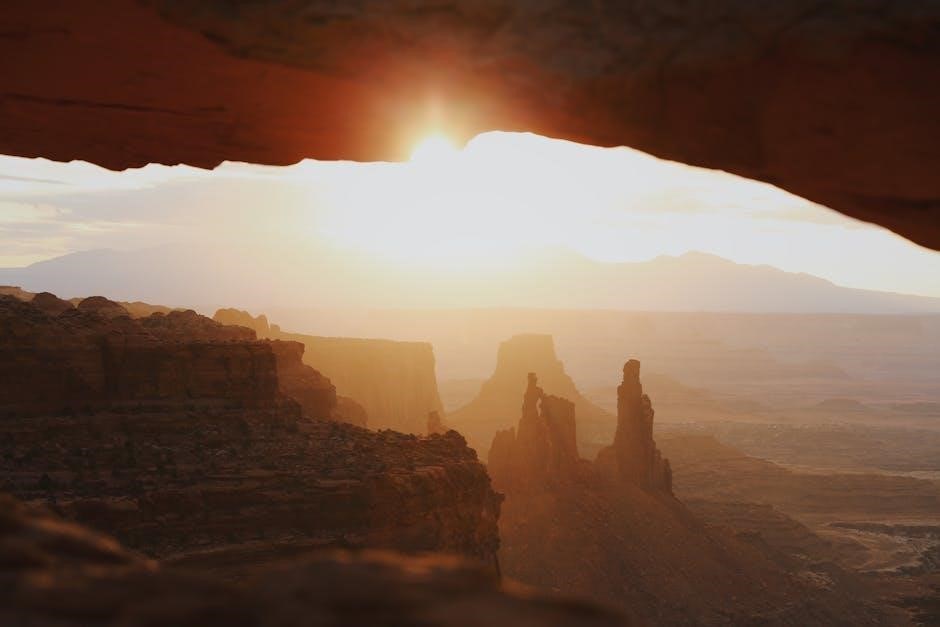
Booking and Cost Considerations
Plan ahead and research tour operators. Compare prices, check availability, and understand inclusions. Costs vary based on hike length, guide expertise, and group size.
How to Book a Guided Tour
To book a guided hike in Olympic National Park, start by selecting a reputable tour operator. Visit the park’s official website for approved guides. Use online reservation systems or contact operators directly via phone or email. Many tours require advance booking, especially during peak seasons. Be prepared to provide details like group size, preferred dates, and physical ability. Confirm the itinerary and cancellation policies before finalizing. Early bookings often secure better availability and options.
Cost Breakdown and What’s Included
Guided hikes in Olympic National Park vary in cost depending on the tour length and type. Day hikes typically range from $80 to $150 per person, while multi-day backpacking trips can cost $300 to $600 or more. Most tours include a professional guide, park permits, and safety equipment. Some packages offer meals, snacks, and transportation. Check with operators for specifics, as inclusions vary. Booking early may provide discounts or better package deals for your adventure.
Discounts and Special Offers
Olympic National Park guided hikes often offer discounts for early bookings, students, and military personnel. Seasonal promotions, like off-peak discounts, can save up to 20%. Group bookings may also reduce per-person costs. Some operators provide loyalty discounts for repeat customers. Check tour websites or social media for limited-time offers. Booking directly through local guides can sometimes yield better deals. Always inquire about special packages to maximize your hiking experience while staying within budget.
Must-See Attractions on Guided Hikes
Explore iconic landmarks like Hurricane Ridge, Hoh Rainforest, and Lake Crescent. Discover hidden waterfalls, ancient forests, and stunning coastal scenery on guided tours.
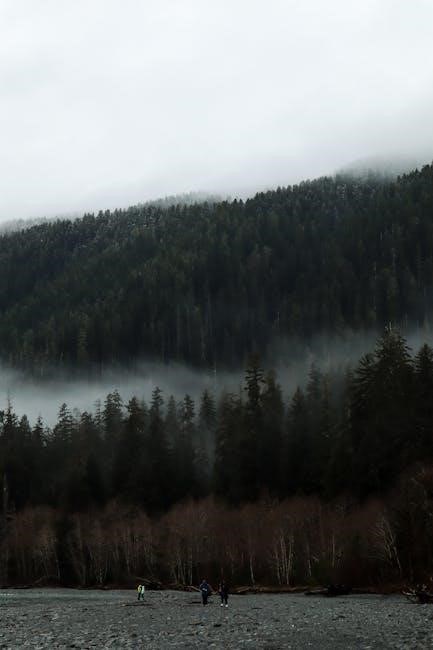
Iconic Landmarks
Olympic National Park is home to breathtaking iconic landmarks that captivate hikers. Hurricane Ridge offers panoramic mountain views and wildflower meadows, while the Hoh Rainforest showcases ancient spruces and moss-draped canopies. Lake Crescent dazzles with its crystal-clear waters and historic charm. The Olympic Coast features dramatic tidepools and rugged shorelines. These landmarks, accessible via guided hikes, provide unforgettable experiences, blending natural beauty with rich ecological and cultural significance.
Hidden Gems and Lesser-Known Trails
Discover Olympic National Park’s lesser-known trails, offering serene solitude and unique experiences. The Quinault Rainforest boasts lush vegetation and secluded waterfalls, while the Elwha Valley reveals historic sites and rebounding ecosystems post-dam removal. Mount Angeles provides challenging climbs with rewarding panoramic views. Guided hikes to these hidden gems allow visitors to explore untouched landscapes, fostering deeper connections with nature and the park’s diverse ecosystems.
Scenic Views and Photographic Opportunities
Olympic National Park offers breathtaking vistas, from mountain peaks to coastal shores. Guided hikes lead to iconic spots like Hurricane Ridge, offering panoramic views of the Strait of Juan de Fuca. Ruby Beach captivates with dramatic sea stacks, while the Hoh Rainforest dazzles with emerald canopies. Photographic enthusiasts can capture stunning moments, including wildlife, sunsets, and unique landforms. Timing hikes during golden hours enhances lighting for exceptional photos, making every trail a visual treasure trove.
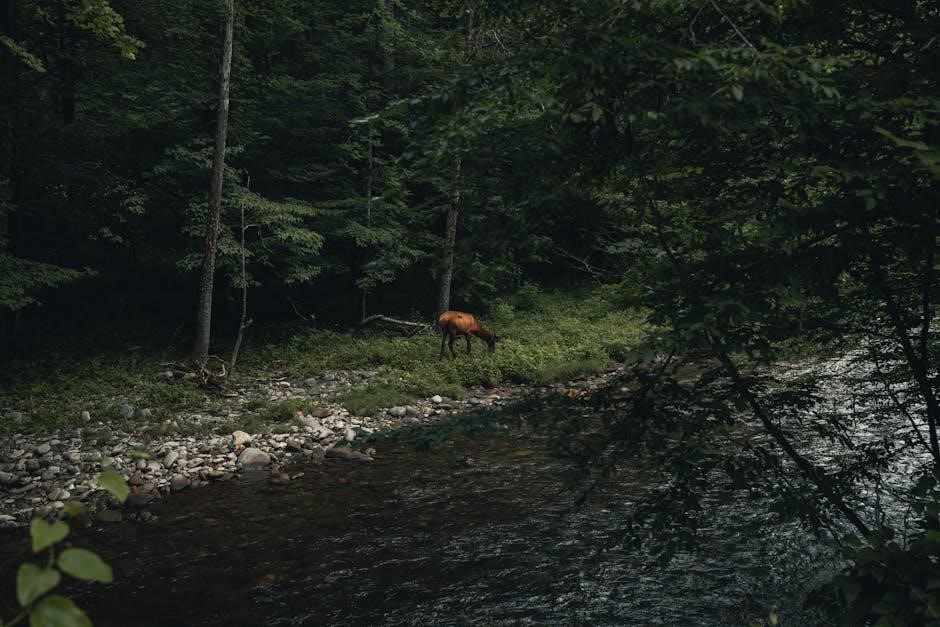
Family-Friendly Guided Hikes
Olympic National Park offers trails perfect for families, with guides ensuring safety and fun. Easy paths like the Hall of Mosses and Olympic Discovery Trail are great for kids, blending adventure with education.
Trails Suitable for Children
Olympic National Park offers family-friendly trails like the Hall of Mosses and Olympic Discovery Trail, which are short, easy, and engaging for kids. These paths feature shaded walks, interesting natural features, and opportunities to spot wildlife. Guides often incorporate educational elements, making hikes fun and interactive for children. The flat terrain and scenic beauty of these trails ensure a enjoyable experience, allowing families to explore together and create lasting memories in this stunning park.
Interactive and Educational Tours
Guided hikes in Olympic National Park often include interactive and educational elements, perfect for engaging visitors of all ages. Knowledgeable guides share insights into the park’s ecosystems, history, and wildlife, making the experience both informative and enjoyable. Many tours incorporate hands-on activities, such as nature scavenger hunts or Q&A sessions, to foster deeper connections with the environment. These tours are designed to educate while entertaining, ensuring a memorable and enriching adventure for everyone involved.
Stroller and Wheelchair Accessibility
Olympic National Park offers several trails accessible to strollers and wheelchairs, ensuring inclusive exploration. Paved paths like the Hall of Mosses Trail and portions of the Quinault Rainforest Trail are well-suited for wheelchairs and strollers. Some trails feature gentle slopes and wide pathways, enhancing accessibility. Rangers can provide maps highlighting accessible routes, helping visitors plan their trip. These accommodations allow everyone to enjoy the park’s beauty, regardless of mobility challenges.
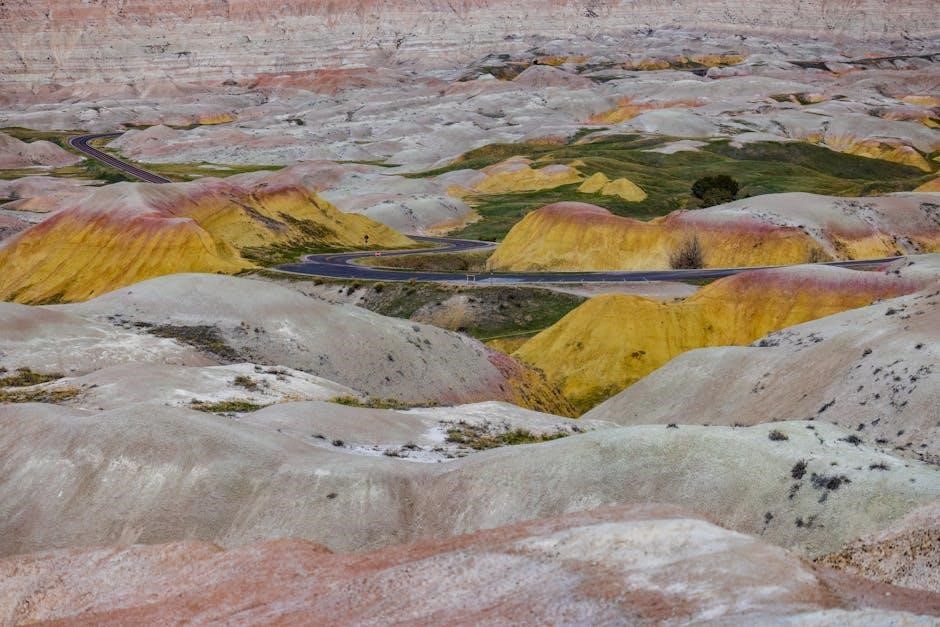
Wildlife and Nature on Guided Hikes
Olympic National Park is home to diverse wildlife, including black bears, mountain goats, and Roosevelt elk. Guided hikes offer insights into their habitats and behaviors, fostering a deeper connection with nature.
Common Wildlife Encounters
Olympic National Park offers diverse wildlife encounters, with frequent sightings of black bears, mountain goats, and Roosevelt elk. Guided hikes increase chances of spotting these iconic species in their natural habitats. River otters, minks, and deer are also commonly seen along coastal and forest trails. Seasonal migrations and feeding patterns make certain times ideal for observing wildlife. Knowledgeable guides help identify and interpret animal behavior, ensuring safe and memorable interactions with the park’s incredible fauna.
Flora and Fauna of the Region
Olympic National Park is renowned for its rich biodiversity, featuring ancient old-growth rainforests, coniferous forests, and coastal ecosystems. The region’s flora includes giant spruce, fir, and deciduous trees like bigleaf maple. Wildflowers such as foxglove and western buttercup add vibrant colors to meadows. The park is also home to iconic fauna, including black bears, mountain goats, and Roosevelt elk. Smaller creatures like river otters and minks thrive in coastal and riverine habitats. Guided hikes offer a unique opportunity to explore and appreciate this incredible ecosystem.
Eco-Friendly and Sustainable Practices
Guided hikes in Olympic National Park emphasize eco-friendly practices to preserve the park’s pristine environment. Guides often follow Leave No Trace principles, minimizing trail impact and promoting responsible waste disposal. Many tours use biodegradable supplies and eco-conscious gear. Park policies encourage sustainable tourism, supporting local communities and reducing carbon footprints. These practices help protect the park’s diverse ecosystems for future generations while fostering a deeper connection with nature.
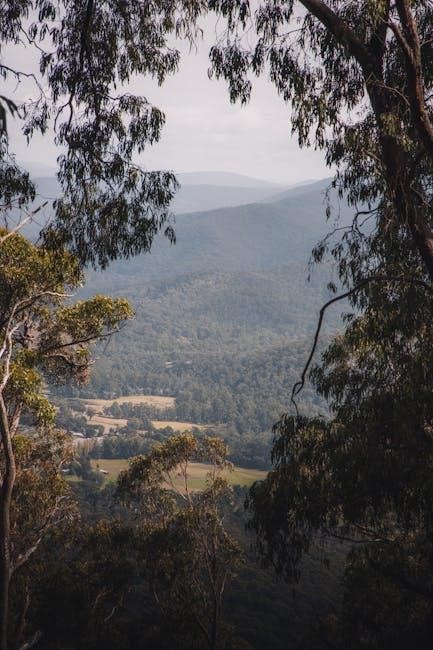
Tips for Making the Most of Your Hike
Arrive early, stay hydrated, and wear sturdy footwear. Bring layers, a map, and snacks. Be prepared for changing weather and respect wildlife and trails.
Engaging with Guides and Fellow Hikers
Ask your guide questions to deepen your understanding of the park’s history, flora, and fauna. Share stories and experiences with fellow hikers to build camaraderie. Be open to learning from others and embracing diverse perspectives. Guides often share hidden insights, so stay curious and engaged throughout the journey. This interactive approach enhances your connection to the natural surroundings and creates lasting memories of your Olympic National Park adventure.
Respecting the Environment
Always stay on designated trails to protect fragile ecosystems and prevent erosion. Carry out all trash and dispose of waste properly to maintain the park’s pristine conditions. Avoid disturbing wildlife or plants, and keep noise levels low to preserve the natural ambiance. Follow Leave No Trace principles to minimize your impact. Respect closed trails and wildlife habitats to ensure the park remains untouched for future generations to enjoy and explore responsibly.
Staying Safe and Aware
Always check weather forecasts and trail conditions before heading out. Bring essentials like a map, first aid kit, and water. Inform someone of your itinerary and expected return time. Stay with your group to avoid getting lost, and be mindful of uneven terrain and wildlife. Keep an eye out for hazards like fast-moving streams or falling branches. Carry a whistle or other signaling device in case of emergencies. Remember, preparedness and awareness are key to a safe and enjoyable hiking experience;
Olympic National Park offers a unique blend of diverse landscapes, from lush rainforests to rugged coastlines. Guided hikes provide expert insights, ensuring memorable and enriching experiences.
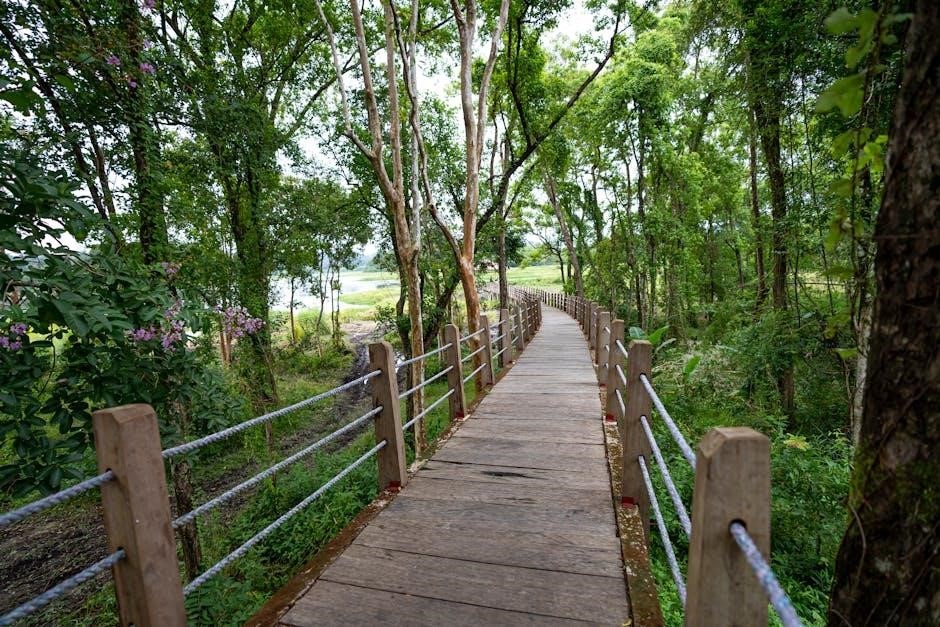
Summarizing the Experience
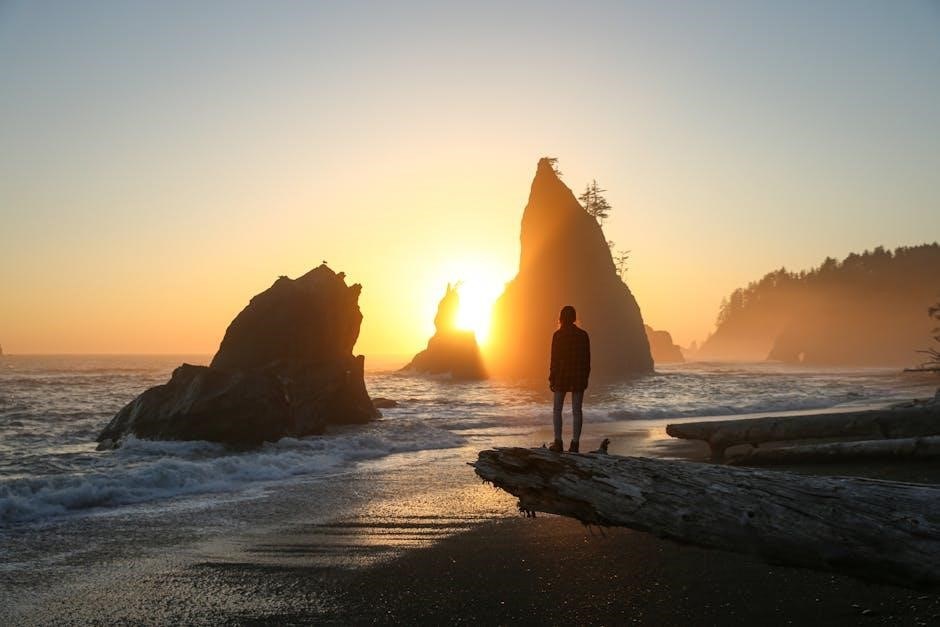
Olympic National Park guided hikes offer a captivating journey through diverse ecosystems, from ancient rainforests to rugged coastlines. Expert guides enhance the adventure, sharing insights into wildlife, geology, and history. Participants often describe the experience as inspiring and educational, with unforgettable moments of natural beauty. The combination of safety, knowledge, and immersion creates lasting memories, leaving hikers with a deeper connection to nature and a renewed appreciation for the park’s wild wonders.
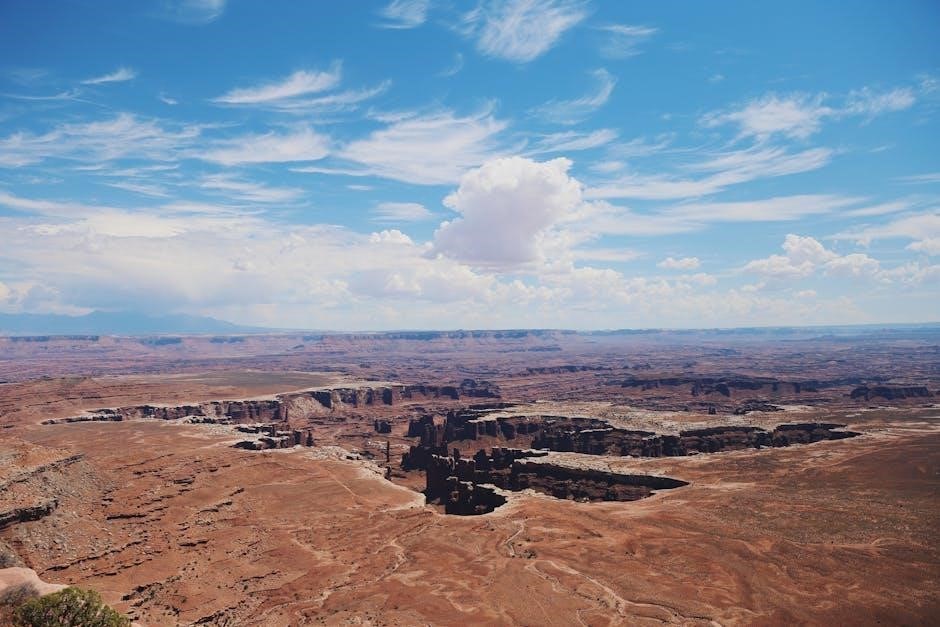
Encouragement to Explore Further
Olympic National Park’s guided hikes invite you to embark on a transformative journey through its stunning landscapes. With each trail offering unique experiences, from towering rainforests to coastal vistas, every step reveals new wonders. Encourage yourself to venture beyond the familiar, as guided tours unlock hidden gems and foster deeper connections with nature. Whether you’re a seasoned explorer or a curious newcomer, the park’s diversity promises unforgettable memories and a lifelong desire to return and discover more of its wild beauty.
Final Tips for Future Visitors
Plan ahead by checking trail conditions and weather forecasts to ensure a smooth experience. Bring layers, sturdy footwear, and essentials like water and snacks. Stay on designated trails to preserve the park’s ecosystems and respect wildlife. Carry a map and inform someone of your itinerary. Embrace the journey, engage with guides, and soak in the park’s beauty. Leave no trace to help protect this incredible wilderness for future generations. Enjoy your adventure responsibly!
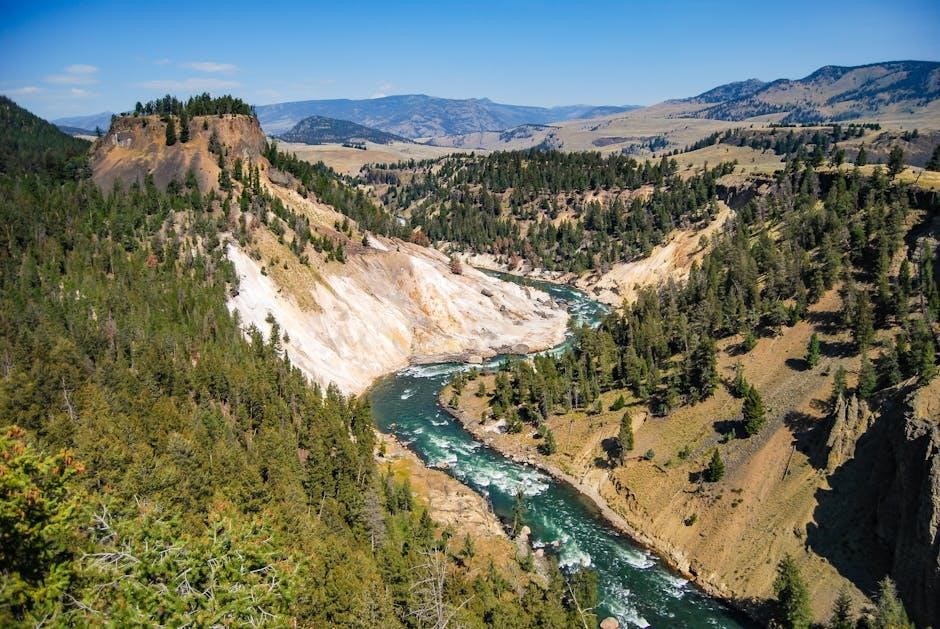
Additional Resources
Visit the official Olympic National Park website for trail maps, guides, and up-to-date information. Check local ranger stations for detailed hike planning and expert advice.
Recommended Reading and Websites
For in-depth insights, visit the Olympic National Park official website. Check out trail guides like Hiking Olympic National Park by Erik Molvar for detailed route descriptions. Websites like AllTrails and Washington Trails Association offer user reviews and maps. Follow park social media for updates, and explore online forums for hiker experiences. These resources ensure a well-prepared and enriching adventure in Olympic National Park.
Local Guides and Tour Operators
For a personalized experience, consider local guides like Olympic Mountain Rescue or Olympic Park Tours. These experts offer insider knowledge and ensure safety. Companies like Olympic Hiking Co. provide tailored itineraries, while Rainshadow Walking Tours focuses on eco-friendly adventures. Many operators cater to families or offer multi-day backpacking trips. Visit their websites or call for bookings to enhance your Olympic National Park hiking experience with local expertise and convenience.
Maps and Trail Guides
Olympic National Park offers detailed maps and trail guides to help plan your adventure. The official National Park Service website provides downloadable maps, including topographic and trail guides. Visitor centers also distribute free maps, highlighting popular routes and lesser-known trails. For digital navigation, GPS coordinates and trail apps like AllTrails are essential. Always carry a hard copy map as a backup for offline use.

